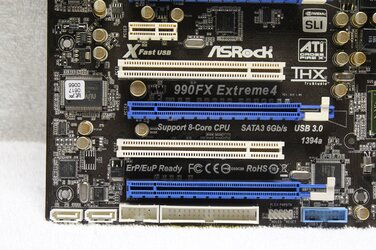Firstly, I do not quite understand why you actually gave it your approval stamp, or why you might not have done it -- I am missing the reasons.
I understand that the placement of the battery -- under the passive heatsink on the MOSFETs -- is stupid; arguably, it is the clumsiest place on the whole mainboard.
Other than that, I see no drawbacks or faults, perhaps other than the purported ones on an UEFI page, which is, however, just a small inconvenience, perhaps not even a nuisance. Otherwise it is completely irrelevant - who cases about UEFI, anyway?! I do not spend weeks there tinkering with it, perhaps at most minutes, so a one-time delay of a few seconds is not a big show-stopper, at least not for me, definitely not.
I do not understand you reasoning about the "average" and the "enthusiast" mainboard classes. Is an "enthusiast-class" supposed to be a freaky one, completely focused on overclocking tinkering, supporting it with the weirdest options, like overclocking through bluetooth with an iPhone, etc.?
On the other hand, I am missing an LPT port... for my home-made EEPROM programmer -- for that is what I consider "enthusiast". But ASRock has not included them for a while -- even the previous generation of mainboards had to do without them. :-(
Fortunately, this mainboard at least has a conveniently placed 1xPCIe connector that is actually usable -- just like KG4UPR has already mentioned -- where I could add a parallel port card for my beloved programmer... ;-) However, it would cost me some additional 20 €... :-( and simply because of the manufacturer's vanity, as the Super-IO chip certainly supports an LPT port!
Indeed, unlike on many others, it is placed above the slot for the graphics card. On many others, it is placed just below the topmost 16xPCIe for graphics card, so it is not really usable, as it is typically blocked by the heatsink of the graphics card.
In fact, I would prefer an internal LPT connector over a FDD one -- after all, the flash chips got so large that they can now hold UEFI, so the main reason for needing a floppy diskette -- BIOS recovery -- has been obsoleted, and at least on 2 grounds at that: (1) the capacity of the typically available diskette (HD) is too small to hold the whole image to be flashed and (2) the boot block that is typically not overwritten during a normal update is now capable of supporting more sophisticated means of recovery.
(That said, ASRock used to be particularly weak when it came to BIOS recovery, which got it a fairly bad reputation in the past. I do not know how things are at the moment, with UEFI.)
But it also has a PATA port, so I can use my fine stash of DVD burners -- never mind their lack of newer firmware, for I still use the same, well-proven, good quality DVD+R discs, not some new, cheap exotic crap...
So... you failed to account for some of these, IMHO... Moreover, you ought to have tested it with a Zambezi (Bulldozer) processor, as that is perhaps the main reason for getting an 990FX-based mainboard, I reckon, at least for most people, esp. now that Phenoms are being phased out of production and the 990FX chipset (and hence the mainboards based on them) is supposed to stay here longer.

